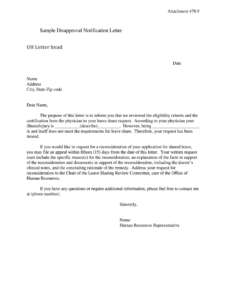Utilizing a formal structure for refusal offers several advantages. It protects the organization from legal challenges by documenting the decision-making process. It also helps preserve positive employee relations by providing a respectful and transparent explanation. Furthermore, a well-crafted form can streamline administrative tasks by ensuring consistent record-keeping.
This structured approach to declining vacation requests facilitates a deeper exploration of best practices for leave management, policy development, and employee communication. It allows for a more focused discussion on creating a fair and efficient system that balances business needs with employee well-being.
Key Components of a Vacation Denial Form
A well-designed form for declining vacation requests ensures clarity, consistency, and professionalism. Several key components contribute to its effectiveness.
1. Employee Information: Clear identification of the employee, including name, department, and employee ID, is essential for accurate record-keeping.
2. Request Details: Specifics of the original request, including requested dates, duration, and type of leave, should be documented.
3. Reason for Denial: A clear and concise explanation for the denial is crucial. This could be due to staffing levels, pre-approved leave by other team members, project deadlines, or other operational requirements.
4. Relevant Policy Citations: Referencing specific company policies regarding leave requests reinforces procedural fairness and transparency.
5. Alternative Dates/Options: Where possible, suggesting alternative dates or exploring flexible work arrangements can demonstrate a willingness to accommodate employee needs.
6. Contact Information: Providing contact information for HR or the relevant manager allows employees to address any questions or concerns.
7. Signature Lines: Including spaces for both the manager and employee to sign acknowledges receipt and understanding of the decision.
A comprehensive form encompassing these elements facilitates a transparent and respectful process for managing leave requests, ensuring clarity and minimizing potential for conflict. This contributes to a more positive and productive work environment.
How to Create a Vacation Denial Form
Creating a standardized form for declining vacation requests requires careful consideration of various factors to ensure clarity, consistency, and legal compliance. The following steps outline the process.
1. Establish a Clear Policy: Before creating a denial form, a clear and comprehensive leave policy should be in place. This policy should outline eligibility criteria, request procedures, approval processes, and grounds for denial. The denial form should directly reflect the established policy.
2. Design a User-Friendly Template: The form should be easy to understand and complete. Clear headings, concise language, and logical flow enhance readability and minimize ambiguity.
3. Incorporate Essential Information Fields: Include fields for employee details, request specifics, reason for denial, policy citations, and potential alternative dates. Contact information for follow-up inquiries should also be included.
4. Ensure Legal Compliance: Review the form with legal counsel to ensure compliance with all applicable labor laws and regulations. This helps mitigate potential legal risks.
5. Obtain Necessary Approvals: Route the draft form through relevant departments, such as HR and legal, for review and approval before implementation.
6. Communicate the Process: Clearly communicate the new form and associated procedures to all employees. This ensures transparency and understanding of the process.
7. Regularly Review and Update: Periodically review the form and update it as needed to reflect changes in company policy, legal requirements, or operational needs.
A standardized approach to declining vacation requests benefits both the organization and its employees. It promotes fairness, transparency, and consistency in managing leave, while also protecting the organization from potential legal issues. Regular review and updates ensure the form remains aligned with evolving business needs and legal requirements.
Standardized forms for declining employee vacation requests offer a structured approach to managing leave, ensuring consistency, transparency, and legal compliance. Key components such as clear reasons for denial, relevant policy citations, and potential alternative dates contribute to a respectful and informative process. Developing such a form requires careful consideration of company policy, legal requirements, and employee needs. Regular review and updates are essential to maintain its effectiveness.
Effective management of leave requests is crucial for maintaining a productive and engaged workforce. A well-designed process for declining vacation requests, supported by a standardized form, fosters positive employee relations, minimizes potential conflict, and ensures operational efficiency. Organizations are encouraged to adopt such structured approaches to promote fairness and transparency in leave management practices.
